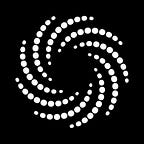The Tech Behind Meteum’s Real-Time Precipitation Map
City dwellers are dependent on weather conditions for their everyday activities. Temperature and precipitation define the lives for millions of people in many ways, just like in ancient times. Nowadays, modern weather forecasting services display all kinds of parameters: type and intensity of precipitation, cloudiness, humidity, atmospheric pressure, and wind direction and speed. Most services provide information on current weather conditions, operational predictions for up to two hours (known as nowcasting), medium-range forecasts for up to ten days, and extended weather predictions for several months.
Weather maps are a fantastic way to check weather at multiple locations at a glance — this feature is especially useful to those who move around constantly, such as daily commuters, tourists, or drivers. Generating accurate, real-time weather maps is possible with the help of advanced neural networks: this approach powers Meteum, our best-in-class weather forecasting platform.
You can play around with Meteum’s precipitation map on our website. We discussed the map’s visual aspects previously.
But the actual engineering behind Meteum’s weather map goes way deeper. Today, we’ll focus on the weather data sources that power the nowcasts you see on the map.
Why Relying on Radars and Weather Models Alone Doesn’t Cut It
Modern precipitation nowcasting algorithms rely on the extrapolation of observations by ground-based radars via optical flow techniques or neural network models. Dependent on these radars, typical nowcasting is limited to the regions around their locations.
Traditional numerical weather prediction models are limited in prediction strength for a precipitation event in a specific location at a particular time. At the same time, radar extrapolation products are suitable for forecasting accurate precipitation area movement during the first couple of hours. Still, they fail to predict precipitation due to the frantic nature of physical processes. Thus, the primary trend in modern nowcasting is to combine high-resolution radar data with traditional NWP models.
However, these radar-based precipitation products are constrained by radar locations and thus poorly scalable. The radars themselves are expensive, their installation depends on agreements with local governments and populace, and their operation requires trained service personnel. In larger countries, the coverage is especially poor, with many remote regions lacking the infrastructure to facilitate the radars. Similar problems arise for many developing countries with a large population in dire need of high-quality weather services but no infrastructure to support radar networks.
Exhibit A: Geostationary Satellites
Global and uninterrupted coverage makes geostationary satellite imagery a desirable source for the precipitation nowcasting algorithm. However, the satellite does not observe the rain directly, so the precipitation data have to be extracted with some sort of heuristic or machine learning algorithm. Absorption and scattering of light in the atmosphere is directed by well-known physical laws, thus a heuristic for precipitation detection can be deduced from a model of the atmosphere.
We have developed a method for precipitation nowcasting based on geostationary satellite imagery. Such satellites “hover” above a certain part of the planet and provide uninterrupted observations. In broad terms, we aim to recreate the precipitation fields obtained from radars using satellite data and then supply nowcasting on a much larger territory using the same or similar model to make predictions. The final verification is obtained by comparing predicted precipitation with the observations made by ground-based weather stations.
Exhibit B: User-Generated Content (UGC)
The incorporation of satellite data allows us to provide nowcasting for territories that are not covered by ground-based radars, with quality comparable to a traditional radar-based nowcast. But to make our nowcasts even more accurate, we ask users to submit feedback via in-app popups. Every day, we receive 3.5 million user reports that help us refine our weather predictions. Submitted user reports are reflected on the live map: they look like adorable little umbrellas!
Meteum delivers precise hyperlocal forecasts by combining multiple sources of data: observations of ground-based radars, imagery from geostationary satellites, and user reports. We use advanced machine learning algorithms and consider the physical properties of the atmosphere and ground surface based on numerical weather prediction models.
Are you ready to transform your business with a top-of-the-line forecasting solution? Visit meteum.io to grab your free API key or reach out to us for more details.
